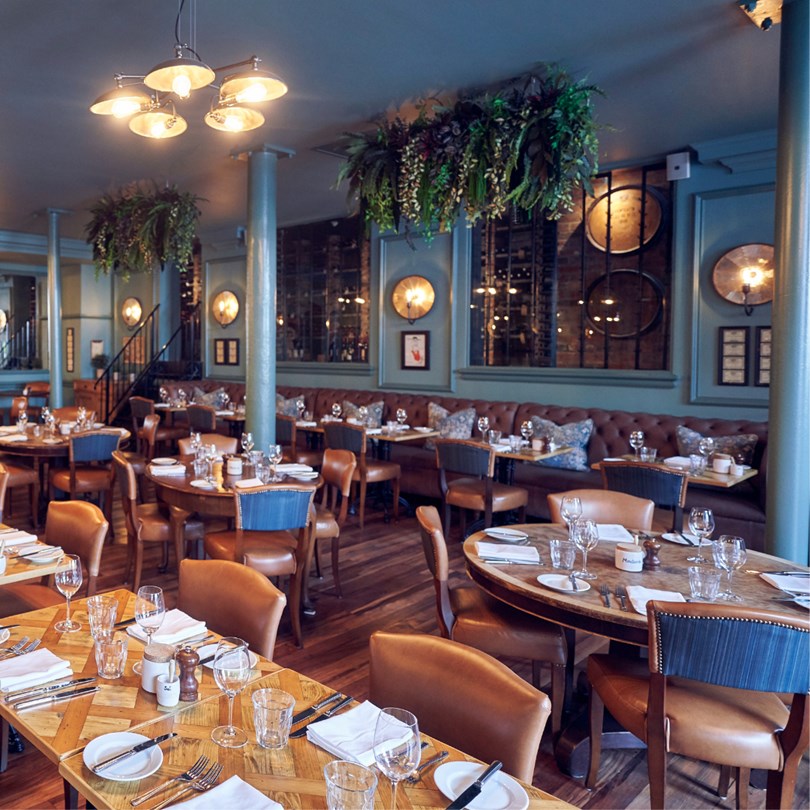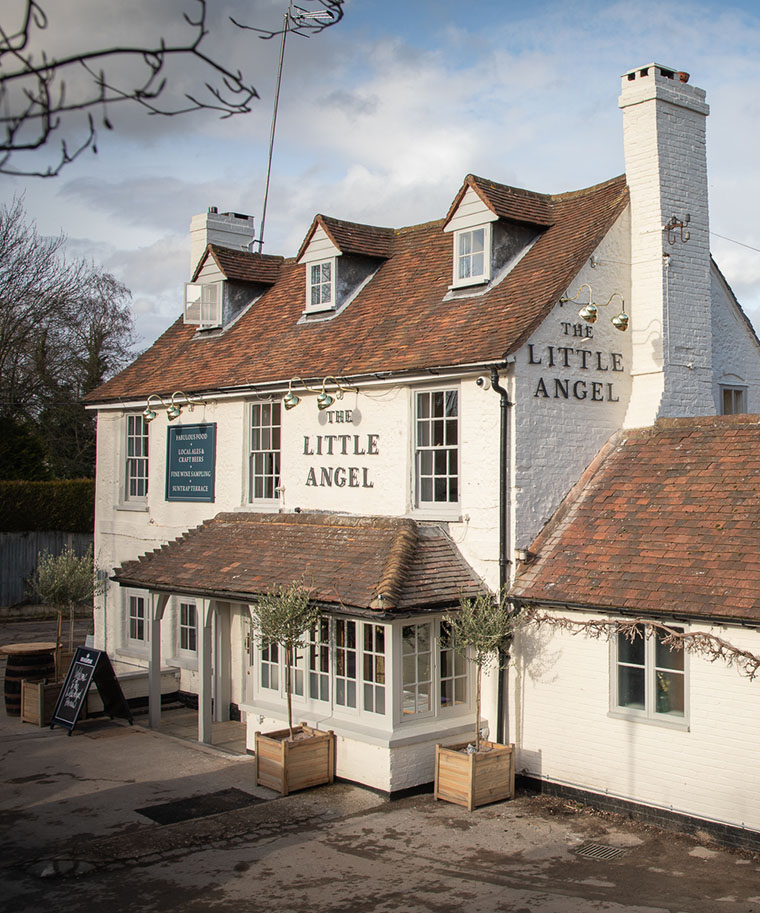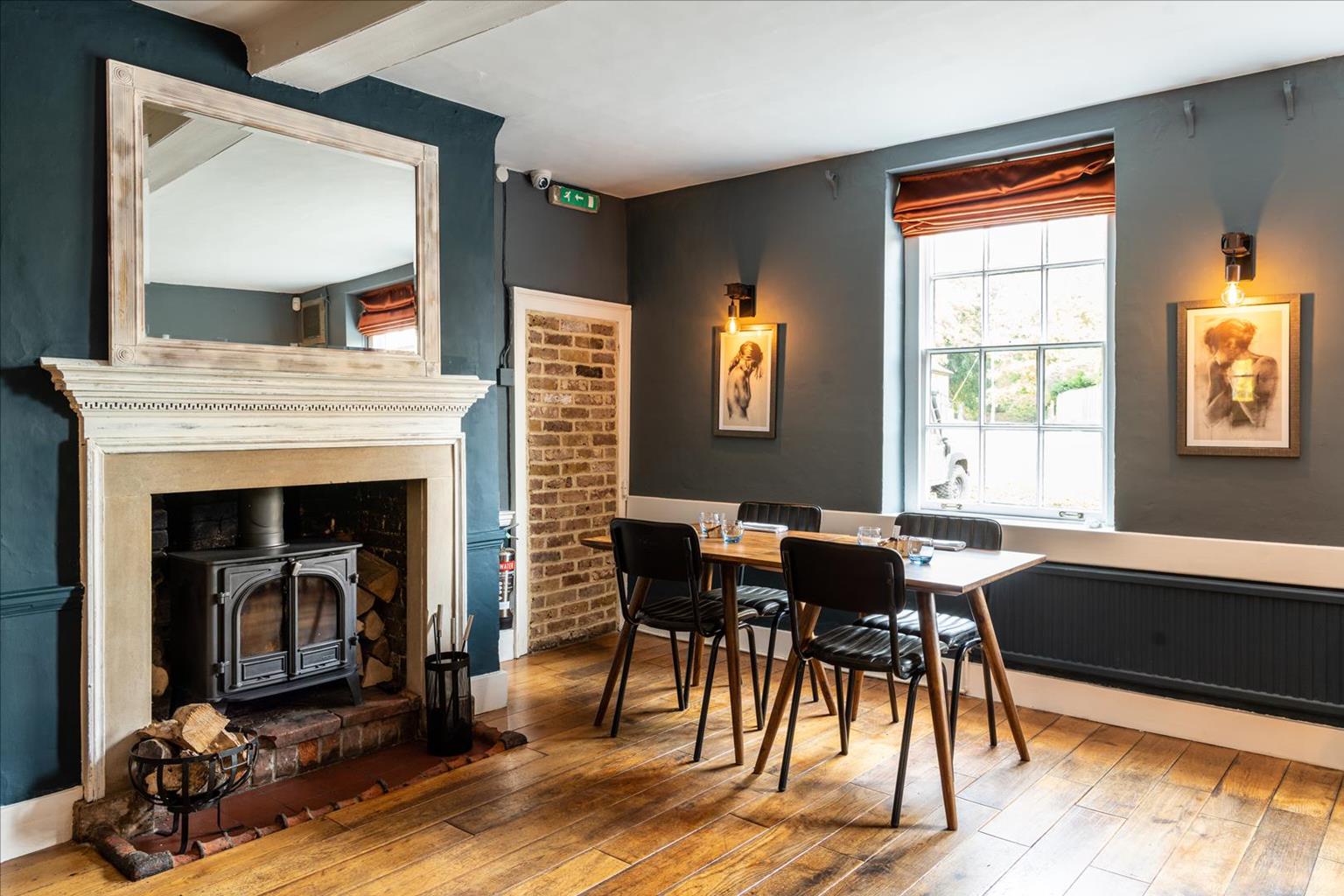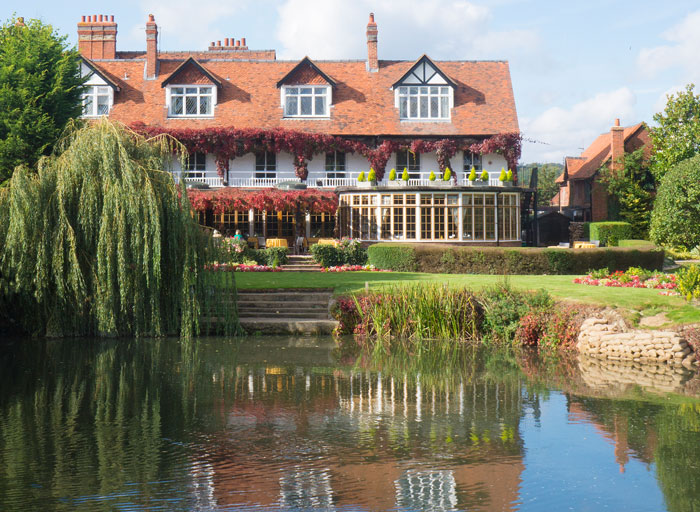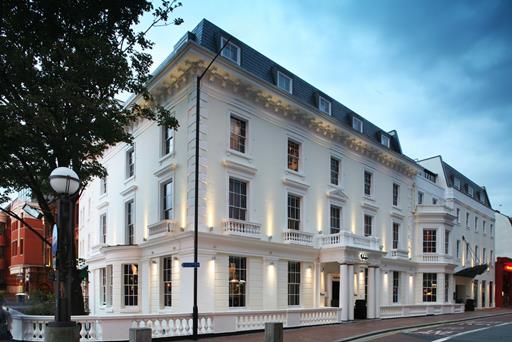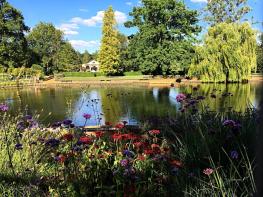Located close to Henley-on-Thames on a golfing estate, this B&B offers comfortable guest…
Greys Court and the Chilterns

3.5 miles (5.7kms)
About the walk
There is a charming intimacy about Greys Court, a delightfully homely air that is not always evident in properties that have been immaculately restored and preserved by the National Trust. Major conservation building work has included the restoration of the roof, chimneys and gables. This was followed by the removal of asbestos from some parts of the building, which then made it possible to install improved electrical, plumbing, and heating infrastructures, and to make smaller conservation repairs to such things as ceilings and panelling.
During the time the house was occupied by the Stapletons, the estate comprised a staggering 8,000 acres (3,240ha) of woodland, parkland and farmland. Today, it covers a more modest 300 acres (121.5ha), with the delightful 16th-century house, standing beside the ruins of the old fortified manor, at its heart.
One of Greys Court’s most popular attractions is its picturesque garden. When Sir Felix and Lady Brunner moved here in 1937, they found this area of the estate to be sadly neglected. War was declared soon after their arrival, so very little work was undertaken until the late 1940s. However, when it came to planning improvements to the garden, the Brunners found the old walls of the fortified manor gave them a distinct advantage over many other country houses.
The gardener’s statue in the Kitchen Garden commemorates Charles Taylor, who was Head Gardener at Greys Court between 1937 and 1955. It was he who helped Lady Brunner rescue the garden and give it new life. The iron pergola linking the Kitchen Garden and the Wisteria Garden includes the initials of Sir Felix and Lady Brunner, and was commissioned to mark their golden wedding in 1977. The wisteria has the effect of binding the various gardens and is best appreciated in early May.
The White Garden was inspired by the renowned gardens of Sissinghurst in Kent, the work of Sir Harold Nicolson and his wife, the writer Victoria (Vita) Sackville-West. This was the first garden at Greys Court to be restored; it was completed in the mid-1950s. The old glasshouse was demolished and stone slabs from the kitchen were used to pave the new summer house and terrace. The pond was created to mark a family engagement.
Walk directions
With the St Nicholas Church lychgate on your left-hand side, walk towards The Maltsters Arms pub and turn immediately left before William’s Cottage to join a gravel drive. Follow the footpath as it runs alongside the churchyard and make for the gate ahead. Then head obliquely right, go through another gate and across the field to a third gate into the National Burial Ground. Veer halfright in the next field. Go through a metal gate to join a track.
Turn right and pass between trees, high hedges and margins of bracken. The track passes alongside the fairways of a golf course before crossing a drive to a gate. Continue ahead to reach the road and turn right. Pass a turning for Shepherd’s Green on the left and follow the road along to the grassy expanse of Greys Green. Veer left on to the green and aim to the right of the pavilion. Join a footpath, go through a gate and descend very steeply through trees to the next gate. Pass under power lines in the pasture and keep the fence on the left. Make for a kissing gate, cross a lane to a footpath and after a few steps you reach a gate. Take the tarmac driveway ahead for about 400yds (366m), passing Greys Court and its admission kiosk.
Veer left through the car park and go through a gate. Follow the path across a field. Go through a gate and straight on, then left through a gate follow the fence. Cross a bridge by a pond, go through a gate and then left through a second gate by a corrugated barn. Keep to the right, with the fence and a small pond on the right. Bear right onto a drive and make for the road ahead. Turn right at this junction, opposite Broadplat Croft.
Keep left at the next junction and continue along the road for 0.25 miles (400m) to reach a tree-lined driveway on the right, signposted to Rotherfield Greys. Where the driveway turns left keep ahead, following a rough track for 300yds (274m) to trees marking an old pit. Just beyond this take a stile (or gap) left, to follow a path down the hillside, keeping a belt of woodland on the right. Beyond it, continue on the grassy path with a fence on the right. Turn right at the end, through the gap, and follow the path alongside fencing. After about 60yds (55m), look for a stile on the left. Cross it, at first maintaining the same direction, but soon swinging left to follow the path up the slope and back to the road opposite the church at Rotherfield Greys where you started the walk.
Additional information
Field and parkland paths, drives and tracks, stretches of road (can be busy), one short, steep section
Chiltern hills and farmland, Greys Court parkland
Keep on lead along roads; under control by golf course and on lead in vicinity of Greys Court
OS Explorer 171 Chiltern Hills West
Spaces by church at Rotherfield Greys
Greys Court, for visitors; otherwise none on route
WALKING IN SAFETY
Read our tips to look after yourself and the environment when following this walk.
Find out more
Also in the area
About the area
Discover Oxfordshire
Located at the heart of England, Oxfordshire enjoys a rich heritage and surprisingly varied scenery. Its landscape encompasses open chalk downland and glorious beechwoods, picturesque rivers and attractive villages set in peaceful farmland. The countryside in the northwest of Oxfordshire seems isolated by comparison, more redolent of the north of England, with its broad views, undulating landscape and dry-stone walls. The sleepy backwaters of Abingdon, Wallingford, Wantage, Watlington and Witney reveal how Oxfordshire’s old towns evolved over the centuries, while Oxford’s imposing streets reflect the beauty and elegance of ‘that sweet city with her dreaming spires.’ Fans of the fictional sleuth Inspector Morse will recognise many Oxford landmarks described in the books and used in the television series.
The county demonstrates how the strong influence of humans has shaped this part of England over the centuries. The Romans built villas in the pretty river valleys that thread their way through Oxfordshire, the Saxons constructed royal palaces here, and the Normans left an impressive legacy of castles and churches. The philanthropic wool merchants made their mark too, and many of their fine buildings serve as a long-lasting testimony to what they did for the good of the local community.
Nearby stays
Restaurants and Pubs
Nearby experiences
Recommended things to do
Why choose Rated Trips?
Your trusted guide to rated places across the UK
The best coverage
Discover more than 15,000 professionally rated places to stay, eat and visit from across the UK and Ireland.
Quality assured
Choose a place to stay safe in the knowledge that it has been expertly assessed by trained assessors.
Plan your next trip
Search by location or the type of place you're visiting to find your next ideal holiday experience.
Travel inspiration
Read our articles, city guides and recommended things to do for inspiration. We're here to help you explore the UK.

